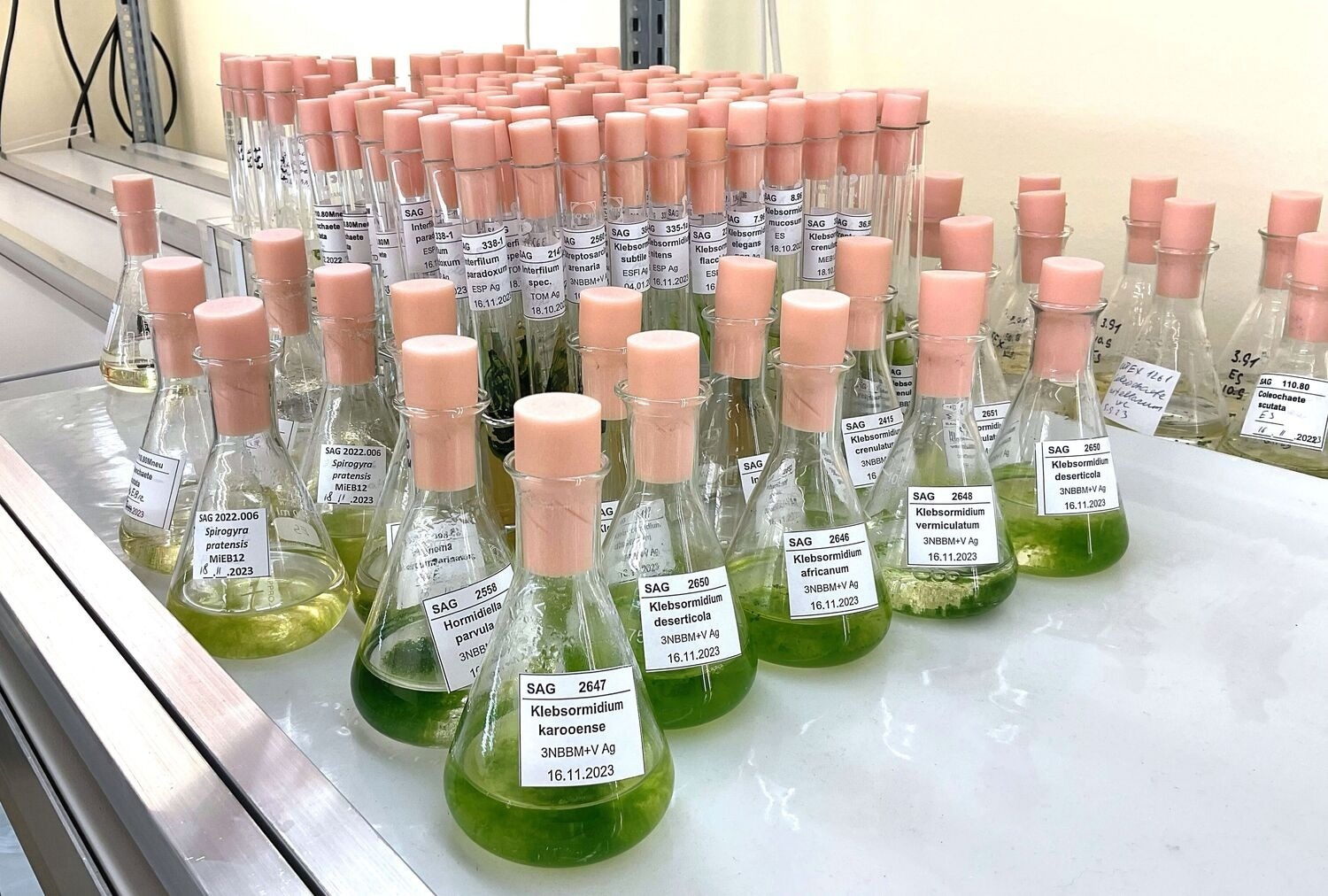Reviewed by Danielle Ellis, B.Sc.Jan 24 2024
The most complex body type among photosynthetic organisms is that of land plants. How did this structure come to be?
 Liquid samples of different algal species investigated in the study, all stored in the Culture Collection of Algae at Göttingen University. Image Credit: Tatyana Darienko
Liquid samples of different algal species investigated in the study, all stored in the Culture Collection of Algae at Göttingen University. Image Credit: Tatyana Darienko
An extensive investigation into the evolutionary history of morphological complexity in streptophytes - which include many types of green algae and land plants - has been conducted by a group of scientists headed by the University of Göttingen. Researchers were able to explore lineages that arose long before land plants.
Their findings alter the knowledge of the relationships among a class of filamentous algal land invaders that predate land plants by a significant margin. Researchers have pinpointed the emergence of multicellularity to nearly a billion years ago using data from modern gene sequencing. The journal Current Biology published the findings.
The study concentrated on the green algae class Klebsormidiophyceae, which is well-known for its capacity to colonize a variety of habitats across the globe. The research team sampled a wide range of habitats, including bogs, soil, natural rocks, tree bark, acidic post-mining sites, sand dunes, urban walls, and building façades. The team also explored streams, rivers, and lakeshores.
It’s really fascinating that these tiny robust little organisms have such a high diversity in their morphology and also are extremely well adapted to live in sometimes very harsh environments.”
Dr Tatyana Darienko, Microbiology and Genetics, Institute for Microbiology and Genetics, University of Göttingen
The extensive sampling undertaken in this study aimed to establish a worldwide distribution map for Klebsormidiophyceae, with a focus on highlighting their adaptability, ecological importance, and concealed diversity. Utilizing genetic data calibrated with fossils, the researchers conducted "molecular clock analyses" to gain insights into the evolutionary timelines of these organisms.
The researchers encountered difficulties in resolving phylogenetic relationships using conventional markers while exploring the intricate evolutionary history of Klebsormidiophyceae families. They used hundreds of genes from the transcriptomes of 24 isolates from various habitats and continents to get around this.
Our approach, known as phylogenomics, was to reconstruct the evolutionary history taking into account whole genomes or large fractions of genomes. This extremely powerful method can reconstruct evolutionary relationships with very high precision.”
Dr Iker Irisarri, Analysis of Biodiversity Change, Leibniz Institute
Their study produced a new phylogenomic tree of life for the three-ordered Klebsormidiophyceae family.
This deep dive into the phylogenomic framework and our molecular clock unveiled Klebsormidiophyceae’s ancient ancestor – a multicellular entity thriving millions of years ago whose descendants began to split into three distinct branches over 800 million years ago.”
Maaike Bierenbroodspot, PhD Researcher, Applied Bioinformatics, University of Göttingen
These results were used to explore the evolutionary history of multicellularity within streptophytes. The study showed that an ancient common ancestor of land plants, other streptophyte algae, and Klebsormidiophyceae was already multicellular. Professor Jan de Vries, Göttingen University’s Institute for Microbiology and Genetics, concludes: “This finding sheds light on the genetic potential for multicellularity among streptophytes, indicating an ancient origin for this crucial trait almost a billion years ago.”
Source:
Journal reference:
Bierenbroodspot, J. M., et al. (2023) Phylogenomic insights into the first multicellular streptophyte. Current Biology. doi.org/10.1016/j.cub.2023.12.070